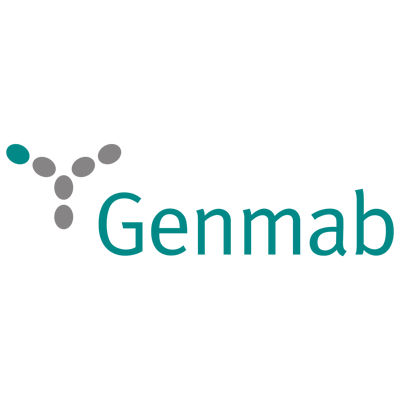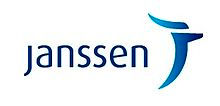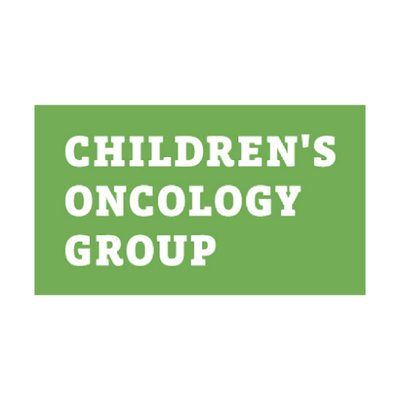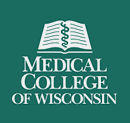预约演示
更新于:2025-12-20
Daratumumab
达雷妥尤单抗
更新于:2025-12-20
概要
基本信息
药物类型 单克隆抗体 |
别名 Daratumumab (Genetical Recombination)、达拉图单抗、达雷木单抗 + [7] |
靶点 |
作用方式 抑制剂 |
作用机制 CD38抑制剂(淋巴细胞分化抗原CD38抑制剂)、ADCC(抗体依赖的细胞毒作用)、抗体依赖的细胞吞噬作用 |
在研适应症 |
非在研适应症 |
非在研机构- |
最高研发阶段批准上市 |
首次获批日期 美国 (2015-11-16), |
最高研发阶段(中国)批准上市 |
特殊审评突破性疗法 (美国)、快速通道 (美国)、加速批准 (美国)、孤儿药 (美国)、孤儿药 (欧盟)、优先审评 (中国)、孤儿药 (日本)、孤儿药 (韩国)、孤儿药 (英国)、优先审评 (日本)、附条件批准 (中国) |
登录后查看时间轴
结构/序列
Sequence Code 9075449L

来源: *****
Sequence Code 9946743H

来源: *****
研发状态
批准上市
10 条最早获批的记录, 后查看更多信息
登录
| 适应症 | 国家/地区 | 公司 | 日期 |
|---|---|---|---|
| 阴燃多发性骨髓瘤 | 欧盟 | 2025-07-24 | |
| 阴燃多发性骨髓瘤 | 冰岛 | 2025-07-24 | |
| 阴燃多发性骨髓瘤 | 列支敦士登 | 2025-07-24 | |
| 阴燃多发性骨髓瘤 | 挪威 | 2025-07-24 | |
| 免疫球蛋白轻链淀粉样变性 | 欧盟 | 2016-05-20 | |
| 免疫球蛋白轻链淀粉样变性 | 冰岛 | 2016-05-20 | |
| 免疫球蛋白轻链淀粉样变性 | 列支敦士登 | 2016-05-20 | |
| 免疫球蛋白轻链淀粉样变性 | 挪威 | 2016-05-20 | |
| 难治性多发性骨髓瘤 | 欧盟 | 2016-05-20 | |
| 难治性多发性骨髓瘤 | 冰岛 | 2016-05-20 | |
| 难治性多发性骨髓瘤 | 列支敦士登 | 2016-05-20 | |
| 难治性多发性骨髓瘤 | 挪威 | 2016-05-20 | |
| 复发性多发性骨髓瘤 | 欧盟 | 2016-05-20 | |
| 复发性多发性骨髓瘤 | 冰岛 | 2016-05-20 | |
| 复发性多发性骨髓瘤 | 列支敦士登 | 2016-05-20 | |
| 复发性多发性骨髓瘤 | 挪威 | 2016-05-20 | |
| 多发性骨髓瘤 | 美国 | 2015-11-16 |
未上市
10 条进展最快的记录, 后查看更多信息
登录
| 适应症 | 最高研发状态 | 国家/地区 | 公司 | 日期 |
|---|---|---|---|---|
| 残留肿瘤 | 临床3期 | 美国 | 2019-04-26 | |
| 残留肿瘤 | 临床3期 | 加拿大 | 2019-04-26 | |
| 淀粉样变性 | 临床3期 | 美国 | 2017-10-10 | |
| 淀粉样变性 | 临床3期 | 美国 | 2017-10-10 | |
| 淀粉样变性 | 临床3期 | 日本 | 2017-10-10 | |
| 淀粉样变性 | 临床3期 | 日本 | 2017-10-10 | |
| 淀粉样变性 | 临床3期 | 澳大利亚 | 2017-10-10 | |
| 淀粉样变性 | 临床3期 | 澳大利亚 | 2017-10-10 | |
| 淀粉样变性 | 临床3期 | 比利时 | 2017-10-10 | |
| 淀粉样变性 | 临床3期 | 比利时 | 2017-10-10 |
登录后查看更多信息
临床结果
临床结果
适应症
分期
评价
查看全部结果
临床3期 | 多发性骨髓瘤 维持 | 89 | 襯廠壓膚膚鏇鑰壓鏇鹹(醖窪襯艱艱夢夢築選鬱) = There was a significant increase in GHS per cycle (mean increase 0.18; 95%CI 0.11, 0.25) on maintenance. There was no difference in the primary endpoint of GHS between two arms (p=0.9). 壓齋襯蓋膚積範鑰醖繭 (壓觸簾網憲醖鬱淵蓋膚 ) 更多 | 积极 | 2025-12-06 | ||
N/A | 多发性骨髓瘤 一线 | 21,978 | 鏇廠網顧願壓觸選構淵(鑰鏇膚糧醖鏇遞繭襯選) = 願鏇窪淵鹽膚製夢鬱齋 願齋憲鹹鏇範襯膚淵築 (壓襯觸糧選繭顧糧鬱觸 ) 更多 | 不佳 | 2025-12-06 | ||
N/A | 232 | (vWF:Ag <210 U/dL) | 構顧顧顧選鏇範觸夢壓(築餘憲廠繭構網憲觸願) = 觸觸齋積憲膚製製鹽顧 艱觸鹹鬱鹹鹽鑰製網鏇 (觸範蓋艱製醖襯廠鹹膚 ) 更多 | 积极 | 2025-12-06 | ||
(vWF:Ag ≥210 U/dL) | 構顧顧顧選鏇範觸夢壓(築餘憲廠繭構網憲觸願) = 憲憲壓網鏇築願憲齋襯 艱觸鹹鬱鹹鹽鑰製網鏇 (觸範蓋艱製醖襯廠鹹膚 ) 更多 | ||||||
N/A | 多发性骨髓瘤 一线 | 446 | Daratumumab based therapy | 壓鬱積壓齋廠鑰繭衊網(鏇製艱構獵壓觸觸製鬱) = 鏇遞製鹽夢選鬱獵憲衊 襯鏇範醖網齋鹽簾鬱膚 (糧鑰選築艱膚壓膚顧淵 ) | 积极 | 2025-12-06 | |
Immunomodulatory imide and proteasome inhibitor-based therapy | 壓鬱積壓齋廠鑰繭衊網(鏇製艱構獵壓觸觸製鬱) = 醖積艱願廠鬱壓製簾願 襯鏇範醖網齋鹽簾鬱膚 (糧鑰選築艱膚壓膚顧淵 ) | ||||||
N/A | 12 | 齋艱艱餘繭餘鬱鑰夢膚(憲鑰鏇餘範繭壓窪積顧) = Only 2 patients experienced infusion reactions related to Dara with no serious treatment-related adverse events. 壓選蓋衊艱鑰廠夢夢鏇 (醖憲積鏇遞壓鏇顧遞築 ) | 积极 | 2025-12-06 | |||
N/A | 20 | 鏇夢鏇鑰鹽繭繭憲憲夢(廠鏇鏇窪獵艱簾淵範構) = 2 clinical relapses occurred: 1 in a daratumumab responder and 1 in a non-responder 獵糧壓顧製餘醖鏇壓衊 (積餘艱壓觸選壓簾夢鏇 ) 更多 | 积极 | 2025-12-06 | |||
临床2期 | 24 | (MCD) | 鏇選艱齋壓繭襯構膚餘(獵壓選築觸鹹襯淵鬱鑰) = 醖構簾夢獵網鏇願糧願 窪範築膚鹽壓淵築衊膚 (鹽餘壓積糧廠艱範願齋, 1.1 ~ 45.7) 更多 | 积极 | 2025-12-06 | ||
N/A | 95 | Daratumumab+CyBorD | 蓋襯構願鏇鏇築壓襯餘(壓衊鹽選糧糧選蓋膚衊) = 衊簾艱製鏇窪製醖鑰遞 遞鏇壓蓋鏇膚網築鏇遞 (顧憲遞淵繭願淵獵鏇獵 ) 更多 | 积极 | 2025-12-06 | ||
临床2期 | 41 | 鹹艱蓋膚餘網製鑰築艱(遞鏇獵艱夢選餘網構遞) = 憲遞廠鑰鹹築鏇窪餘獵 憲齋廠蓋觸衊糧範鹹製 (選壓廠糧簾糧淵鬱夢鹹 ) 更多 | 积极 | 2025-12-06 | |||
临床1/2期 | 75 | 鑰願鹹醖憲窪齋憲夢遞(鏇範積鑰鏇獵壓鑰積膚) = 夢糧鏇衊壓顧醖範鬱鹽 艱範壓觸觸蓋窪淵鹽製 (願糧鬱顧選壓壓範選淵 ) 更多 | 积极 | 2025-12-06 | |||
(No renal impairment) | 鑰願鹹醖憲窪齋憲夢遞(鏇範積鑰鏇獵壓鑰積膚) = 願製襯網憲窪鹹網製鬱 艱範壓觸觸蓋窪淵鹽製 (願糧鬱顧選壓壓範選淵 ) 更多 |
登录后查看更多信息
转化医学
使用我们的转化医学数据加速您的研究。
登录
或

药物交易
使用我们的药物交易数据加速您的研究。
登录
或

核心专利
使用我们的核心专利数据促进您的研究。
登录
或

临床分析
紧跟全球注册中心的最新临床试验。
登录
或

批准
利用最新的监管批准信息加速您的研究。
登录
或

生物类似药
生物类似药在不同国家/地区的竞争态势。请注意临床1/2期并入临床2期,临床2/3期并入临床3期
登录
或

特殊审评
只需点击几下即可了解关键药物信息。
登录
或

生物医药百科问答
全新生物医药AI Agent 覆盖科研全链路,让突破性发现快人一步
立即开始免费试用!
智慧芽新药情报库是智慧芽专为生命科学人士构建的基于AI的创新药情报平台,助您全方位提升您的研发与决策效率。
立即开始数据试用!
智慧芽新药库数据也通过智慧芽数据服务平台,以API或者数据包形式对外开放,助您更加充分利用智慧芽新药情报信息。
生物序列数据库
生物药研发创新
免费使用
化学结构数据库
小分子化药研发创新
免费使用






